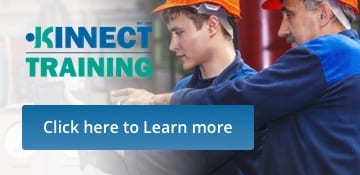A tormentor of every workplace is the requirement for manual handling – no one can escape it. Typically, injuries arise from repetitive or heavy manual handling tasks that are performed poorly.
Common examples of manual handling tasks are lifting and stacking boxes, reaching for products from step ladders, continuous repetitive movements, using heavy tools or power tools, etc.
So what do we do? Get rid of all the workers?
Human workers still have an important role in most work environments. They can still do a lot of things better than robots or machines. Besides, removing humans from the workplace to be replaced by robotics or mechanisation is often not financially viable.
How does an employer decrease their incidence of injury and their yearly spend on insurance premiums and the related costs of workplace injury?
By getting all workers to use good manual handling habits.
It’s a simple concept really, we need workers to change their behaviours! But a change in behaviour often requires either careful planning and/or skilful execution. The challenge is packaging all the above, creating worker engagement and having workers “run with it”?
Should we perform our manual handling training in-house or externally, using a third party provider?
That depends on you and your workplace. In order to answer that question, there are three things you need to consider:
- How well you can identify high risk tasks;
- How well you can create sustainable behavioural change with your workers;
- How well manual handling training is generally received and used by your workforce.
If you are unsure about any of these, you may need help with that area and you will most likely benefit from engaging a third party provider. However, if you are confident that you can meet the all the requirements above then you are ready to commence training.
So who is the best provider to perform the manual handling training for your staff?
An organisation who does not JUST do manual handling training as their core business.
Let me explain:
The best providers of manual handling training perform injury management and injury rehabilitation as well as other preventative services like manual handling training. They understand the pitfalls of the work environment from a broader point of view. These providers are not just experienced at identifying hazards in the workplace, but they are also experienced at:
- Considering human biomechanics;
- Considering the common injuries associated with particular tasks or working with particular environmental factors;
- Getting injured workers back to work.
What will the ideal provider do for me?
A provider like KINNECT can successfully train workers to use careful planning and skillful execution with regards to manual handling tasks will:
- Conduct an assessment to identify high risk tasks and determine the key aspects that are high risk;
- Initially provide solutions to reduce the injury risk according to The Safety Hierarchy Of Control;
- Develop a program that will reduce or manage risk effectively through behavioural change;
- Deliver the manual handling training in an effective engaging way;
- Review the effectiveness of the program through analysis of pre and post training injury statistics.
How do you TEACH manual handling in a way that will “stick”?
The answer to the million dollar challenge is this: All manual handling training has to be relevant and engaging. A PowerPoint presentation in the classroom is of no use to a manual worker (we are yet to hear of a 3 hour PowerPoint presentation sustainably change someone’s behaviour). Similarly, teaching a new technique to a worker who is more skilled at a task than the trainer can be met with opposition.
The most effective manual handling training programs are programs that are conducted in the work environment and in consultation with individuals or with small work teams. This way work can continue, the trainer is able to witness the worker “at the coal face” and the worker is able to participate in problem solving and learning. This method is able to produce a better sustainable behaviour change because the worker feels like you understand their work and that you are working together solve problems.
So what do we come away with, after an effective manual handling program?
For the worker, they will:
- Have an improved understanding of their body and how repetitive loads affect its ability to perform tasks safely over a period of time;
- Understand how a manual handling injury sustained at work can impact on their personal life, and be motivated to avoid high risk practices;
- Feel empowered to identify and suggest solutions to risks they identify within their workplace, and have the basic knowledge required to modify tasks or ask for assistance.
For the Employer, this type of program will:
- Reduce the frequency and severity of manual handling injuries, namely Lost Time or Medical Treatment Injures;
- Reduce overall reportable injury statistics;
- Reduced the costs of workplace injury, down time and workers compensation premiums
Contact KINNECT on 1300 546 632 or visit our Manual Handling page to learn more.
Ready to partner with KINNECT?
Request a Service
Know what you need from us? Request a service from us right now.
Locate us
Have a need in a particular location? View our service capabilities throughout Australia.
